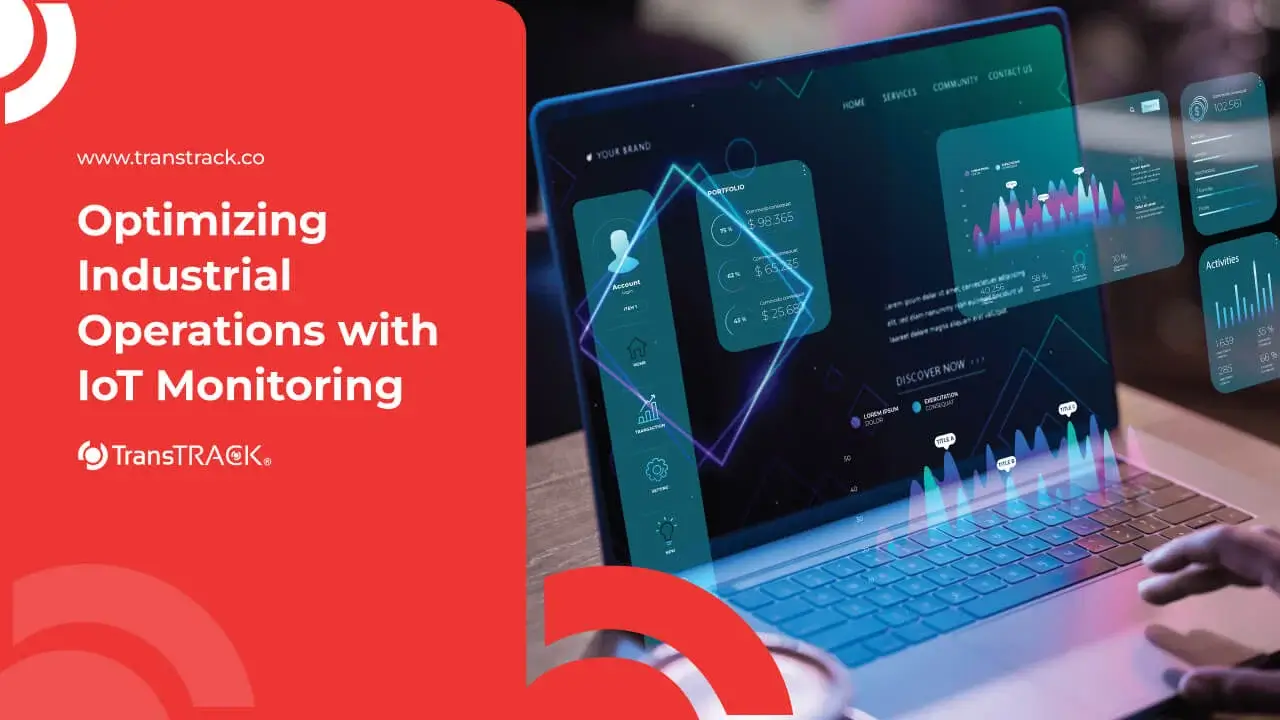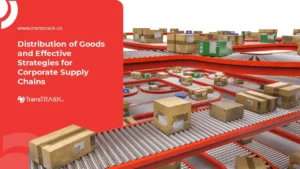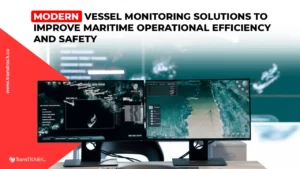Optimizing Industrial Operations with IoT Monitoring
Posted on April 16, 2025 by Nur Wachda Mihmidati

In today’s digital era, IoT monitoring has become one of the most transformational technologies used in various industries. With the ability to collect and analyze data in real-time, IoT enables companies to improve efficiency, reduce costs, and monitor operational conditions more accurately. From the manufacturing sector that relies on predictive maintenance, to transportation that utilizes real-time fleet monitoring, the application of IoT monitoring is increasingly widespread and has a positive impact.
Through IoT monitoring, companies can gain deeper insights, make faster decisions, and optimize existing resources. One example of the application of this technology is in the world of transportation, where the management of vehicle fleets becomes smarter and more efficient. With Fleet Management System from TransTRACK, you can experience the benefits of this technology firsthand.
What is IoT monitoring?
IoT Monitoring (Internet of Things Monitoring) is a system that utilizes IoT devices to supervise and monitor conditions or activities in an environment or system. IoT devices consist of sensors and tools that can collect data in real-time, which is then transmitted to a platform or system for analysis and monitoring. This technology enables automated information collection without the need for direct human intervention.
How does an IoT monitoring system work?
The IoT monitoring system works by connecting physical devices equipped with sensors or other monitoring tools to the internet network, so that the data generated can be transmitted and processed in real-time. Here are the steps of how the IoT monitoring system works:
1. Sensors and IoT Devices
IoT devices are equipped with different types of sensors (such as temperature, humidity, pressure, or location) that collect data from the surrounding environment. Each sensor has a specialized function to monitor certain conditions.
- In a vehicle monitoring system, GPS sensors are used to track the position of the vehicle, while fuel sensors monitor fuel consumption.
2. Data Collection
Sensors attached to IoT devices collect data continuously. This data can be physical parameters (such as temperature, humidity, or speed) or situational data (such as vehicle location).
3. Connection to the Network
Once the data is collected, the IoT device sends the information over a network (usually using communication protocols such as Wi-Fi, Bluetooth, Zigbee, or cellular networks) to a central platform.
- In a logistics system, devices mounted on containers transmit position and status data of goods to a server connected to a logistics management system.
4. Data Processing
The data received by the monitoring platform (server or cloud) is processed and analyzed. This process can involve:
- Real-Time Processing: Data is processed instantly to provide immediate information.
- Predictive Analysis: Data is analyzed to detect trends or patterns that could indicate problems or opportunities.
5. Visualization and Monitoring
After processing, the data is presented on a dashboard platform that can be accessed by users via computer or mobile devices. Here, users can view real-time status, reports, or alerts that may appear.
- For example: In the vehicle monitoring system, fleet managers can see the live vehicle position, engine condition, as well as the estimated time of arrival.
6. Alerts and Automated Actions
IoT monitoring systems can be programmed to provide alerts or even perform automated actions based on the detected conditions. For example, if the temperature in a warehouse is too high, the system can send an alert to the manager or even activate the cooling system automatically.
- In industrial systems, if a machine is approaching a dangerous temperature limit, the system can give a warning or stop the machine to prevent damage.
7. Data Storage
Data collected and analyzed is often stored for future reference. This storage enables long-term monitoring and historical analysis, and assists in strategic decision-making.
- For example, temperature, humidity, and vehicle status data can be stored in the cloud for performance analysis and maintenance planning.
8. Integration with Other Systems
IoT monitoring systems are often integrated with other systems, such as warehouse management systems (WMS), fleet management systems (FMS), or ERP platforms to provide more comprehensive insights and to make more coordinated decisions.
With this way of working, IoT monitoring enables efficient remote monitoring and management of conditions, detects problems before they occur, and improves overall operational performance.
What are the Components and Technologies in IoT Monitoring
IoT monitoring systems incorporate various components and technologies that work together to collect, transmit, process, and monitor data in real-time. Here are the main elements that support IoT monitoring functionality:
1. IoT Sensors and Devices (Hardware)
Sensors and IoT devices are the starting point of data collection, using various physical tools to monitor specific conditions.
- Sensor: Collects data from the environment, such as temperature, humidity, or location. Examples: temperature sensors, gas sensors, GPS sensors.
- Actuator: A component that implements actions based on sensor data, such as opening a valve or turning on a device.
- Microcontroller (MCU): Controls sensors and actuators, and processes and transmits data.
- Battery/Power Source: Provides power for IoT devices.
2. Communication Network
The data collected by IoT devices must be transmitted to the monitoring platform, which requires a proper communication network.
- Wi-Fi: Short-distance connection with high speed, suitable for devices connected to the internet.
- LoRaWAN: Low-power long-distance networking technology, suitable for devices in remote locations.
- 5G: High-speed and low-latency mobile network, ideal for real-time and large-scale applications.
- Bluetooth & Zigbee: For close-range communication with low power consumption, often used in personal devices or smart homes.
- NBIoT: Cellular network with low power, used for IoT devices that are widely spread over a large area.
3. Cloud Computing & Edge Computing
Once the data is delivered, data processing and analysis is done either through the cloud or locally (edge computing), for efficiency and faster decision making.
- Cloud Computing: Storing and processing data on remote servers, allowing for centralized analysis and monitoring. Popular cloud platforms include AWS, Azure, and Google Cloud.
- Edge Computing: Edge Computing processes data closer to its source (e.g., on a local device or server) to reduce latency and dependency on internet connectivity.
4. Monitoring Platforms and Dashboards
Platforms and dashboards are used to display processed data, providing users with an interface to monitor conditions in real-time. These platforms facilitate data-driven analysis and decision-making. Dashboards typically include graphs, maps, and alerts to monitor system conditions.
5. Security
As IoT devices are often connected to open networks, security becomes an important aspect to protect data and systems from potential threats.
- Data Encryption: Protects data sent from the device to the platform to prevent unauthorized access.
- Authentication & Authorization: Ensures only authorized users can access data and control devices.
- Network Security: Using firewalls and secure protocols to protect the network of IoT devices.
By understanding the components and technologies that make up IoT monitoring, we can more easily understand how these systems work and why these elements are important for a successful IoT implementation.
Application of IoT Monitoring in Various Industries
IoT monitoring has opened up a wide range of possibilities to improve operational efficiency and optimize resource usage in various industries. Here are some applications of IoT monitoring in key sectors:
1. Manufacturing (Machine Monitoring & Predictive Maintenance)
In the manufacturing sector, IoT monitoring is used to monitor the condition of machinery and equipment in real-time, which helps in detecting problems early before they occur. This technology enables:
- Predictive Maintenance: Using sensors to monitor vibration, temperature, and pressure on machines, so that breakdowns can be predicted and maintenance performed on time.
- Production Process Optimization: Collecting production data to analyze efficiency and detect areas that need improvement.
2. Transportation & Fleet (GPS, Fuel, Vehicle Temperature)
In the transportation industry, IoT monitoring is used to manage vehicle fleets and ensure more efficient operations:
- GPS Tracking: Monitors vehicle position in real-time, ensuring on-time delivery and route efficiency.
- Fuel Monitoring: Sensors to measure vehicle fuel consumption, helping to identify leaks or inefficient fuel usage.
- Vehicle Temperature: Monitors vehicle temperature to ensure optimal conditions during travel, especially for shipping temperature-sensitive goods.
3. Agriculture (Smart Farming, Automated Irrigation)
In the agriculture sector, IoT monitoring improves resource use efficiency and supports more sustainable agriculture:
- Smart Farming: Uses sensors to monitor soil conditions, moisture, and plant nutrients to ensure optimal agricultural yields.
- Automatic Irrigation: Uses soil moisture sensors to automatically set up irrigation systems, saving water and increasing agricultural yields.
4. Energy (Solar Panel Monitoring, Electricity Consumption)
The energy industry utilizes IoT monitoring to maximize energy efficiency and monitor consumption:
- Solar Panels: Monitor the performance of solar panels to ensure they are working at optimal capacity and detect potential issues such as dirt or damage.
- Electricity Consumption: Monitor energy usage in buildings or industrial facilities, helping to identify wastage and optimize energy use.
5. Smart Building & Healthcare
IoT monitoring is also applied in smart buildings and healthcare sectors to improve comfort, safety, and efficiency:
- Smart Building: Monitoring temperature, lighting, humidity, and air quality in buildings to optimize occupant comfort and save energy.
- Healthcare: Using wearable devices to monitor patients’ vital signs in real-time, such as heart rate, blood pressure, or oxygen level in the blood, which enables more responsive and timely treatment.
With the implementation of IoT monitoring in various industries, organizations can improve operational efficiency, reduce costs, and improve the quality of services provided.
With the implementation of IoT monitoring, various industries can now utilize real-time data to increase efficiency, reduce costs, and improve overall performance. From manufacturing using predictive maintenance to transportation monitoring vehicles closely, the potential of this technology is huge. The same goes for the agriculture, energy, smart building, and health sectors, where IoT can create smarter and more sustainable solutions.

If you are in the transportation industry and want to optimize vehicle fleet management, Fleet Management System from TransTRACK is the perfect solution. By utilizing IoT monitoring, TransTRACK provides the ability to monitor GPS, fuel consumption, vehicle temperature, and more-all in one easy-to-use platform.
Improve your operational efficiency and fleet management with TransTRACK’s Fleet Management System. Contact us for a demo or further consultation and experience the benefits of IoT technology in your transportation management!
Recent Post
Topic :
Recommended Articles

 Bahasa Indonesia
Bahasa Indonesia







